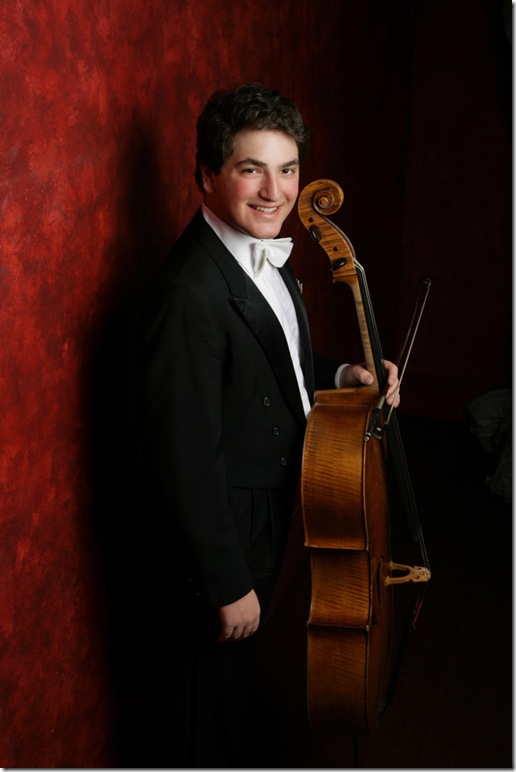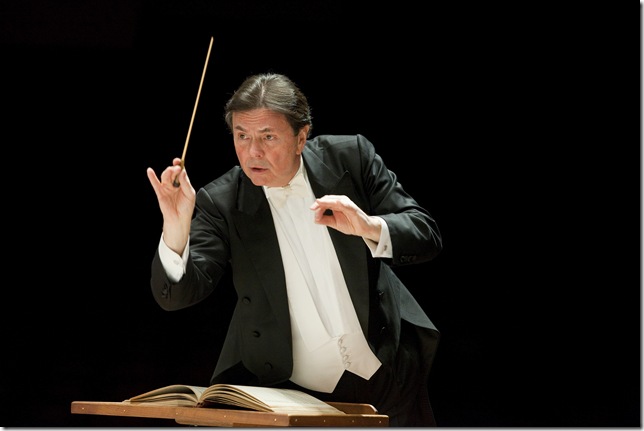Surely one of the best pieces of local musical news to be heard this past weekend is that Gerard Schwarz will be returning at some future date to lead a concert by the Boca Raton Symphonia.
Schwarz, who led the Seattle Symphony from regional to stellar status in his 26 years as its music director, demonstrated in the Symphonia’s concert Sunday afternoon at the Roberts Theater his ability to bring first-class musical values to this ensemble, even when some of the playing fell a bit short.
The concert of Haydn, Schubert, J.S. Bach and Dmitri Shostakovich also introduced a large audience to a fine young cellist in the person of Julian Schwarz, Gerard’s youngest son. Julian was the soloist in the Shostakovich Cello Concerto No. 1 (in E-flat, Op. 107), a contemporary masterwork and one that showed off the Juilliard student’s gifts to good effect.
Julian Schwarz is a cellist of thorough technical mastery with a strong, dark tone that gives his playing a sound of depth and maturity. It is also a highly controlled, careful kind of playing, not uncommon in a young musician finding his way into the business and also still trying to absorb everything he can from his mentors.
And so what we had in the Shostakovich was a fine performance in every respect, particularly in the way he paced the long cadenza, but it was also a performance that a shade too cautious, without enough of the fire and abandon that makes the music really live. This is music with a satiric edge and sarcastic punch, and it could have used some more of it, especially in the last movement.
The very first theme of the concerto, a wry four-note motif, was somewhat clunky and slow, but it works better if it’s impish and energetic right off the bat, to set the tone for the rest of the concerto. Julian played the second movement with surpassing loveliness, mining a rich vein of beautiful tone even into the harmonics at the very end, with its ghostly celesta behind it.
The breadth of his technique was clear in the finale, with its frenetic fingerwork and violent multiple stops, and perhaps in part because he is a tall man, Julian didn’t have to do battle with his instrument in order to lean over and nail all those passages in the A-string stratosphere. But it still could have used some more heat, some more on-the-edge playing, strong as it was otherwise.
The elder Schwarz placed hornist Greg Miller right down front with the strings, a smart move that brought a chamber-music double-concerto sensibility to some sections of the music. The Symphonia played admirably well, keeping well out of the way of the soloist and letting him shine.
As an encore, Julian played one of the best-known of all solo cello pieces, the Prelude from J.S. Bach’s Cello Suite No. 1 (in G, BWV 1007). His reading of it was delicately pretty, smooth and serene, and technically impeccable. Even here, a touch more personality would have been welcome, but clearly Julian Schwarz is already a formidable musician who should have a fine career ahead of him.
The Shostakovich was the second work on the program, the first being the Third Orchestral Suite (in D, BWV 1068) of Bach. Gerard Schwarz led this with a genial hand, stressing open, celebratory colors. He conducts phrases more often than simply beating time, and that added shape to the music. Some of the trumpet work in this performance was iffy, but not distractingly so, and in general the suite had a nice lilt to it, especially in the final Gigue.
The same light-on-its-feet feel was evident in the Overture in the Italian Style (No. 2 in C, D. 591) of Franz Schubert, which kicked off the second half of the concert. The introduction was a little ragged, but the rest of the work bubbled along in good Rossinian fashion, and the quality of its invention made one wonder why Schubert couldn’t have had more success in the opera house (Fierrabras, for instance, has plenty of beautiful things in it).
The concert ended with the Miracle Symphony (No. 96 in D) of Haydn, and this was the piece that showed more than any other on the program the skill with which Schwarz was able to bring these players to a different level. From the very first note (and I’m not exaggerating) it was clear that this was a symphony that had been well-rehearsed and in which everyone on stage was a full participant.
This was a Haydn that lived and breathed on its own terms, not trying to sound like Mozart or Beethoven, but comfortable in its homelier idiom. Many performances of these symphonies in particular present a real ensemble problem for orchestras because of the plain precision they call for. But Sunday afternoon, there was none of that: Each upbeat was where it was supposed to be, each single point of color came in where it was supposed to, each rest was the right length.
There was fine solo work from Mei Mei Luo and Dale Sandvold in the violin duet in the second movement, and Erika Yamada’s high-flying oboe solo in the trio of the Minuet was gentle and commanding at the same time. But best of all was the overall balance of the work; no part of the ensemble sounded out of place or awkward, all of it sounded fully like Haydn.
The last movement, which is one of those tricky, jokey Haydn finales, was taken at just the right speed, and had just the right sense of humor, ending in a burst of joyous energy before the double bar. This is the kind of informed playing and conducting that explains exactly why we still cherish Haydn’s music, and at the same time perhaps sets out some interesting repertory pathways for the Boca Symphonia.
The Boca Raton Symphonia’s next concert, on Sunday, Feb. 24, features South Korean pianist Yoonie Han with Philippe Entremont and the orchestra in the Beethoven Concerto No. 3 (in C minor, Op. 37). Also on the program is Mozart’s Nozze di Figaro overture and the Second Symphony of Saint-Saens. 4 p.m., Roberts Theater, St. Andrew’s School, Boca Raton. Tickets: $33-$59. Call 866-687-4201 or visit www.bocasymphonia.org.

